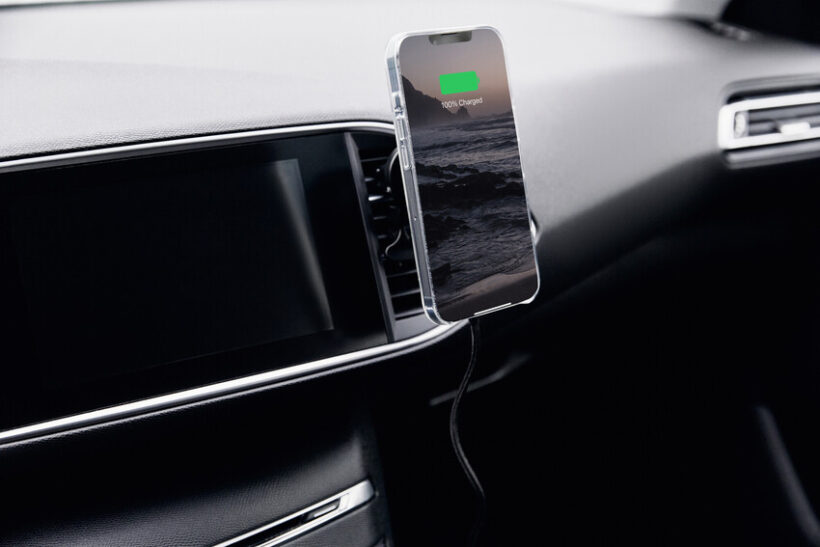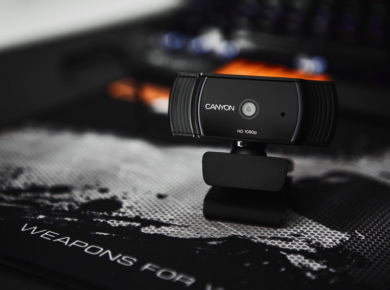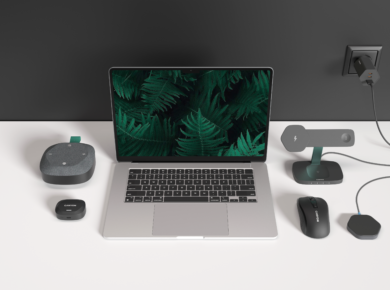Your smartphone is an extension of you. It stores your memories, connects you to the world, and helps you manage your life. But how well do you truly care for it? Smartphone care is more than just protecting your device; it’s a skill that makes your digital life run smoothly. In this guide, we’ll share how to take care of your phone to keep it performing at its best.
Battery Care
Your smartphone’s battery is the lifeblood of your device. Having a healthy battery means you’ll enjoy uninterrupted use and won’t face unexpected shutdowns in the middle of something important. To maximize its lifespan and performance, follow these smartphone care tips:
Charging Habits & Optimization Tips
- Avoid fully charging and discharging your phone. Instead, aim to keep the battery level between 20% and 80%.
- Close unnecessary apps to conserve battery power. Many smartphones offer built-in features to manage background activity.
- Lowering screen brightness significantly impacts battery life. Consider using auto-brightness settings to adapt to different lighting conditions.
- Most smartphones have built-in power-saving modes that reduce performance to extend battery life. Activate this feature when needed.
- High or low temperatures can damage your battery. Protect your phone from excessive heat or cold, use cases, and avoid exposing your phone to direct sunlight.
- Utilize battery health features: If applicable, take advantage of built-in battery health features on specific smartphone models (e.g., optimized battery charging, battery health reports). Some users also report improvements in battery performance after a calibration process.
- When replacing your battery, opt for genuine parts to ensure optimal performance and safety. Avoid counterfeit options.
There are a couple battery myths that we must debunk:
Myth 1: Completely draining the battery before recharging is necessary. Fact: This is not true for modern lithium-ion batteries.
Myth 2: Leaving your phone plugged in all night will damage the battery. Fact: Modern smartphones have built-in protections to prevent overcharging.

Screen Protection
Your smartphone’s screen is susceptible to scratches, cracks, and smudges. Protecting your smartphone’s screen is essential to maintain its visual clarity and functionality.
Types of Screen Protectors
There are three primary types of screen protectors:
- Tempered glass: Offering superior protection against impacts and scratches, tempered glass screen protectors are the most durable option.
- Plastic film: While less protective than tempered glass, plastic film protectors are generally more affordable and easier to apply.
- Liquid protectors: These are applied as a liquid and cure to form a protective layer. They offer good protection but require professional application.
Proper Application
Applying a screen protector correctly is key to effectiveness. Most screen protectors come with detailed instructions. Generally, you’ll have to clean the screen with a microfiber cloth, align the protector, and smooth out any bubbles (this part usually involves a lot of patience).
Preventing Scratches & Cracks
To minimize the risk of scratches and cracks:
- Handle with care: Avoid placing your phone in your back pocket or other risky locations.
- Use a protective case: A case provides additional protection for your phone’s screen. Plus, your phone deserves a nice outfit.
- Avoid abrasive materials: Keep your phone away from keys, coins, and other hard objects that could leave it scratched and embarrassed.
Cleaning the Screen
Regular cleaning does wonders for screen clarity:
- Use a soft cloth: A microfiber cloth is ideal for removing fingerprints and smudges.
- Avoid harsh chemicals: Harsh cleaners can damage the screen’s protective coating, so no chemistry experiments this time.
- Apply screen cleaner sparingly: Less is more when it comes to cleaning products. If using a screen cleaner, apply it to the cloth, not directly to the screen.
Let’s debunk some screen protection myths:
Myth 1: Screen protectors reduce screen clarity. Fact: High-quality screen protectors have advanced coatings that minimize impact on screen visibility.
Myth 2: Once a screen protector is cracked, it must be replaced immediately. Fact: While a cracked screen protector is less effective, it still works until you can replace it.
By following these phone care tips, you can significantly reduce the risk of damage to your smartphone’s screen and keep it lookin’ good.

Hardware Care
Your smartphone is a delicate piece of technology that requires careful handling. Here’s how to how to take care of your cellphone to maintain optimal performance and longevity:
- Invest in a protective case: Like we said before, a high-quality case provides an extra layer of defense against drops, scratches, and daily wear and tear. But it’s not just about aesthetics: a good case can protect the vital inner components of your phone, which are very prone to fall damage. Consider factors like material, style, and protection level when choosing a case.
- Handle with care: Obviously, your device will live longer given there’s little to none reckless behavior, such as placing your phone in precarious positions or using it as a tool. Remember, your phone is a sensitive device, not a superhero.
- Protect ports and speakers: Use dust plugs to keep dirt and debris out of your phone’s ports. For water-resistant phones, follow the manufacturer’s guidelines. Avoid exposing your phone to excessive moisture or dust.
- Clean regularly: We recommend wiping down your phone with a soft, lint-free cloth slightly dampened with isopropyl alcohol. Avoid using harsh chemicals or abrasive materials. Focus on cleaning the screen, back, and sides of the phone.
Now, let’s debunk a few hardware maintenance myths:
Myth 1: Using a case makes your phone bulky and less stylish. Fact: This is like saying wearing a seatbelt is uncomfortable. Sure, it might add a little bulk, but it’s worth it to protect your investment.
Myth 2: Dropping your phone from a short height won’t cause damage. Fact: Even the shortest drop can potentially be a heartbreaker (and a hit to your pocket). Treat your phone with the care it deserves.
Software Maintenance
Making sure your smartphone’s software is up-to-date and optimized is the best way to maintain long-term performance and security.
Keeping the Operating System Updated
Here’s why regularly installing software updates is crucial for your smartphone’s well-being:
- Security patches: Updates often include critical security patches that can protect your device and personal data from cyber threats such as malware, ransomware, and phishing attacks.
- Bug fixes: Software updates usually address common issues and bugs, which improves the stability and reliability of your phone.
- Performance enhancements: Updates can optimize system performance, leading to faster app loading times, smoother multitasking, and better overall responsiveness.
- New features: Manufacturers frequently introduce new features and functionalities through software updates, which can help you have a better user experience.
Managing Apps
Smart app management works wonders when it comes to optimizing your phone’s performance and storage. Here are a few key tips:
- Uninstall unused apps: Regularly review your installed apps and remove those you no longer use. This is the easiest way to free up some storage space and prevent unnecessary energy consumption.
- Clear app cache: App caches store temporary data to improve performance, but over time, they can accumulate too much data and slow down your phone. Clearing app cache can help improve app loading times and prevent bugs and crashes.
- Lower background activity: Many apps continue to run in the background when you’re not actively using them, consuming battery power and potentially affecting performance. You can restrict background activity for apps you don’t frequently use to optimize your phone’s resources.
- App permissions: Many apps have access to your personal data by default. We recommend reviewing app permissions and revoking unnecessary access to protect your privacy and security.
Regular Backups
One of the most efficient ways to safeguard your important data is creating and maintaining regular backups for your smartphone. Here’s why:
Data loss prevention: Backups protect your data from accidental deletion, hardware failures, software malfunctions, and even theft.
Backup options: Consider trying multiple backup methods, including cloud storage, external hard drives, or your computer.
Backup regularity: Determine how often you’ll run backups based on the importance of your data. For example, critical data might require daily or weekly backups.
Backup testing: Regularly test your backup process to ensure it works as it should and your data can be restored successfully.
Performance Optimization
To ensure your smartphone’s speed and responsiveness are just right, give these optimization techniques a try:
Close unnecessary apps: As we mentioned before, quitting apps that are running in the background can free up RAM and improve overall performance.
Disable animations: Reducing visual effects, such as animations and transitions, can slightly improve performance, especially on older devices.
Clear storage: Regularly delete unwanted files, photos, and videos to free up storage space and prevent performance bottlenecks.
Manage widgets: While widgets can be convenient, excessive use can impact performance. Consider removing unnecessary widgets.
Restart your phone: Periodically restarting your phone can refresh the system and resolve minor issues.
And now, let’s debunk some software maintenance myths:
Myth 1: Restarting your phone frequently is bad for the battery. Fact: Restarting your phone can actually refresh the system and improve performance.
Myth 2: Deleting apps will erase your data. Fact: Uninstalling an app only removes the app itself, not your data associated with it.

Data Backup and Security
Protecting your personal data is paramount in today’s digital age. Implementing effective backup strategies and robust security measures is essential to safeguard your valuable information.
Types of Backups
There are three primary backup methods to consider:
Local backups: Storing your data on an external hard drive or other local storage device provides quick access but is vulnerable to physical damage, theft, or natural disasters.
Cloud backups: Offsite storage in the cloud offers accessibility from anywhere with an internet connection and protection against physical damage. However, it relies on a stable internet connection and the security of the cloud service provider.
Hybrid backups: Combining local and cloud backups provides the best of both worlds, offering redundancy and accessibility.
Data Backup Tips
- Try versioning: Apart from doing regular backups based on the importance of your data, consider creating multiple versions of your backups to protect against data corruption or accidental deletion.
- Backup rotation: Implement a backup rotation system to manage storage space efficiently. For example, use a 3-2-1 backup strategy: three copies of your data, on two different media, with one copy stored offsite.
Protecting Personal Data
Safeguarding your personal data is the best way to prevent identity theft and other cybercrimes. Here’s how to do that efficiently:
- Strong passwords: Create complex passwords that combine uppercase and lowercase letters, numbers, and symbols. Avoid using easily guessable information, such as birthdays and pet names.
- Password managers: Utilize password managers to generate and store strong, unique passwords for each online account.
- Biometric security: Take advantage of biometric authentication methods like fingerprint, facial recognition, or iris scanning to add an extra layer of security to your devices.
- Beware of phishing and other scams: Be cautious of suspicious emails, links, or calls that request personal information. Verify the authenticity of any request before providing details.
- Keep software updated: Regularly update your operating system, apps, and antivirus software to protect against vulnerabilities. Install reputable antivirus and anti-malware software on your smartphone to protect against mobile threats.
- Secure Wi-Fi networks: Protect your data by using strong passwords for your home Wi-Fi network and avoiding public Wi-Fi for sensitive activities. Consider using a VPN for added security when connecting to public Wi-Fi.
- Social media privacy: Review your privacy settings on social media platforms to limit the amount of personal information you share publicly. Be cautious about accepting friend requests from unknown individuals.
- Data breaches: In the event of a data breach, take immediate steps to protect your information, such as changing passwords, monitoring your accounts for suspicious activity, and contacting the affected company.
Conclusion
In 2024, our smartphones are much more than just devices; they practically connect us to the rest of the world. By treating your smartphone with care and attention, you can extend its lifespan and make sure your investment pays off. So, give your phone some love, and enjoy smooth operations and minimal headaches.








